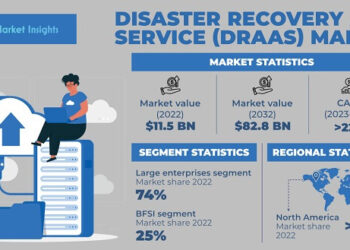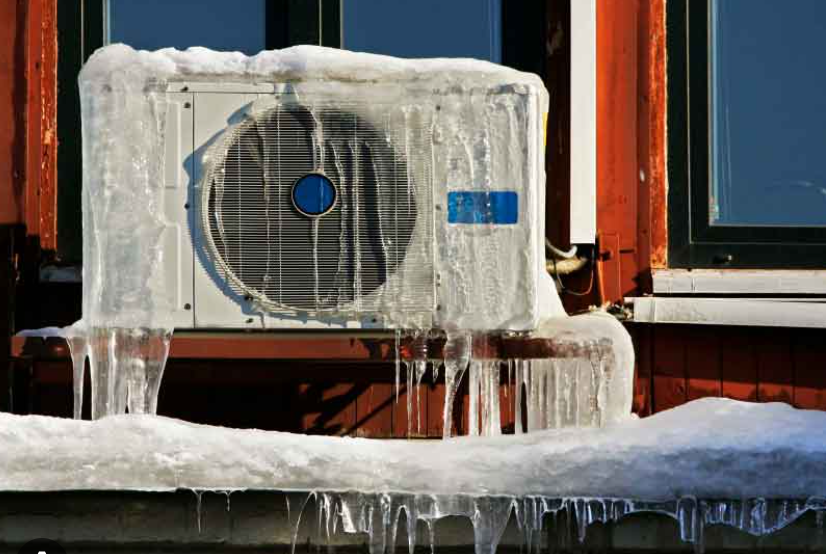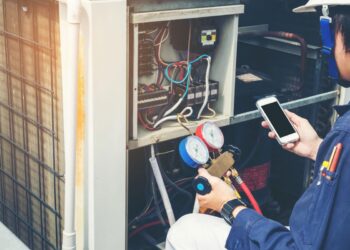
The slow flow of hot water from a water heater can cause inconvenience and frustration in our daily lives. During such times, it becomes crucial to analyze the reasons and find solutions to rectify the situation. This article will present the common causes that lead to slow hot water flow and appropriate remedies.
I. Common Causes of Slow Hot Water Flow
A slow hot water flow from a water heater is a common issue that can disrupt daily routines and cause frustration. Understanding the underlying causes is essential for effective troubleshooting and resolving the problem. In this comprehensive analysis, we will explore the common causes of slow hot water flow in detail.
1. Mineral Buildup
One of the most prevalent and troublesome factors contributing to a reduction in hot water flow is mineral buildup within the water heater. The minerals primarily responsible for this issue are calcium and magnesium, which are found in varying concentrations in most water sources. These minerals precipitate out of the water when it is heated, forming solid deposits on the interior surfaces of the tank and the heating element.
Causes:
- Hard Water: The hardness of water is determined by the mineral content, primarily calcium and magnesium ions. Hard water leads to more significant mineral buildup due to its high mineral concentration.
- Heating Process: As water heats up inside the tank, the minerals tend to precipitate and form scale, which adheres to the interior surfaces, reducing the space available for water flow.
Effects:
- Reduced Efficiency: Mineral buildup acts as an insulator, making it harder for the heating element to transfer heat to the water, which results in slower heating.
- Limited Water Flow: As the scale accumulates, it narrows the pathways through which water flows, ultimately leading to a reduced hot water flow rate.
Solutions:
- Flushing the Tank: Regularly draining and flushing the water heater can help remove accumulated minerals. This process should be carried out as part of routine maintenance.
- Installing a Water Softener: Water softeners are designed to reduce the mineral content of water by exchanging calcium and magnesium ions with sodium ions, preventing mineral buildup within the water heater.
2. Sediment Accumulation
Another frequent cause of slow hot water flow is sediment accumulation within the tank. Sediments primarily consist of minerals, rust, and other impurities that settle at the bottom of the water heater over time. These sediments can obstruct the flow of water through the tank, impeding the efficiency of the heating process.
Causes:
- Hard Water and Impurities: Hard water with a high mineral content tends to accumulate more sediments. Additionally, impurities from the water source contribute to sediment buildup.
- Lack of Regular Maintenance: Failing to perform routine maintenance, such as tank flushing, allows sediment to accumulate over an extended period.
Effects:
- Reduced Heating Efficiency: Sediment acts as an insulating layer at the bottom of the tank, reducing the effectiveness of the heating element and prolonging the heating process.
- Restricted Water Flow: As sediment accumulates and hardens, it can block water pathways, diminishing the flow rate of hot water.
Solutions:
- Flushing the Tank: Regular tank flushing is an effective way to prevent and remove sediment buildup. It should be part of scheduled maintenance to maintain optimal water flow.
3. Pipe Corrosion
Corrosion within the water pipes, especially those connected to the water heater, can contribute to a reduction in hot water flow. Corrosion typically occurs when chemical reactions between the water, pipes, and oxygen cause the pipes to deteriorate.
Causes:
- Water Quality: Corrosion is more likely to occur when water quality is poor or contains high levels of impurities.
- Age of Pipes: As water pipes age, they become more susceptible to corrosion. The material of the pipes and their exposure to different conditions play a role in the corrosion process.
Effects:
- Pipe Blockages: Corrosion can lead to the buildup of rust and mineral deposits within the pipes, resulting in blockages that hinder the flow of hot water.
- Reduced Water Pressure: Corroded pipes may not only restrict water flow but also lead to reduced water pressure throughout the plumbing system.
Solutions:
- Pipe Replacement: In severe cases, replacing corroded pipes may be necessary to improve hot water flow. Choosing materials that are resistant to corrosion, such as PEX or copper, can also be considered.
4. Thermostat Issues
Problems with the thermostat in the water heater can lead to inefficiencies in maintaining the desired hot water temperature. This can result in hot water flow that is either too hot or not hot enough, impacting overall user satisfaction.
Causes:
- Malfunctioning Thermostat: The thermostat may malfunction due to electrical or mechanical issues, resulting in inaccurate temperature regulation.
- Incorrect Settings: The thermostat may be set at the wrong temperature, causing the water heater to work inefficiently.
Effects:
- Inconsistent Hot Water Temperature: A malfunctioning thermostat can lead to variations in water temperature, affecting the overall quality of hot water flow.
- Inefficient Heating: If the thermostat is not working correctly, the water heater may use more energy than necessary to maintain the desired temperature, leading to increased energy costs.
Solutions:
- Thermostat Replacement: If the thermostat is malfunctioning, replacing it with a new, functioning one is a common solution to ensure proper temperature regulation.
- Thermostat Adjustment: If the thermostat is set incorrectly, making the necessary adjustments can improve the efficiency of the water heater and hot water flow.

A slow hot water flow is a common issue that can be caused by a range of factors, including mineral buildup, sediment accumulation, pipe corrosion, and thermostat issues. Understanding these causes is essential for effective troubleshooting and addressing the issue. Implementing the appropriate solutions, such as flushing the tank, using water softeners, and maintaining the thermostat, can help restore optimal hot water flow and improve the overall performance of the water heater.
II. Solutions to Improve Hot Water Flow
A slow hot water flow from a water heater can disrupt daily activities and lead to frustration. Understanding the common causes of this issue is crucial, but equally important are the solutions to improve hot water flow. In this comprehensive analysis, we will explore a range of solutions to address the problem effectively.
1. Flushing the Tank
Flushing the tank is a fundamental maintenance practice that can significantly improve hot water flow. Over time, sediment and mineral buildup accumulate at the bottom of the water heater tank, restricting water flow and reducing heating efficiency. Flushing the tank involves draining and cleaning the interior to remove these obstructions.
Procedure:
- Turn Off the Heater: Before beginning the flushing process, it’s essential to turn off the water heater to prevent heating while there’s no water inside.
- Connect a Hose: Connect a garden hose to the drain valve located near the bottom of the tank. Ensure the other end of the hose is placed in a suitable drainage area.
- Open the Valve: Open the drain valve and allow the water to flow out. Sediment and mineral deposits will be flushed out with the water. You may need to open a hot water faucet elsewhere in the house to allow air to enter the tank and facilitate draining.
- Repeat as Needed: Depending on the level of sediment buildup, you may need to repeat this process several times until the water runs clear.
2. Installing a Water Softener
A long-term solution to prevent mineral buildup within the water heater is installing a water softener. Water softeners are designed to reduce the concentration of hardness minerals, such as calcium and magnesium, in the water. By doing so, they prevent mineral scale from forming within the water heater and plumbing.
Benefits:
- Minimized Mineral Accumulation: A water softener effectively reduces the amount of calcium and magnesium ions in the water, preventing them from precipitating out and forming scale in the water heater.
- Extended Appliance Lifespan: With reduced mineral buildup, the water heater and other appliances that use water are less likely to suffer from scale-related damage, potentially extending their lifespan.
3. Replacing the Anode Rod
The anode rod is an essential component in water heaters. It is designed to attract and corrode instead of the tank’s interior walls. Over time, the anode rod depletes and requires replacement to maintain the water heater’s efficiency.
Procedure:
- Turn Off the Water Heater: Before replacing the anode rod, the water heater should be turned off to ensure safety during the process.
- Locate the Anode Rod: The anode rod is typically located at the top of the water heater and can be accessed through the hot water outlet.
- Remove and Replace: Using a wrench, remove the old anode rod and replace it with a new one. Ensure the new rod has the same dimensions as the old one.
- Inspect and Maintain: Regularly inspect the anode rod to determine when it requires replacement. Anode rods are typically replaced every 3-5 years.
4. Adjusting the Thermostat
The thermostat in a water heater controls the water temperature. If it is set too high or too low, it can affect hot water flow and efficiency.
Procedure:
- Access the Thermostat: Depending on the water heater model, access the thermostat through a panel or cover. This may require the use of a screwdriver or other tools.
- Check Current Settings: Take note of the current temperature settings. Standard settings are often between 120°F and 140°F (49°C and 60°C).
- Adjust the Thermostat: If the thermostat settings are too low and hot water is insufficient, consider adjusting it to a higher temperature. Conversely, if the temperature is too high and poses a risk of scalding, adjust it to a lower temperature.
- Monitor and Test: Allow time for the water heater to reach the adjusted temperature. Test the hot water flow to ensure it meets your requirements.
5. Professional Inspection and Maintenance
In many cases, it is beneficial to seek professional help when addressing issues with hot water flow and water heaters. Certified plumbers and technicians can provide expert advice, conduct thorough inspections, and perform necessary maintenance or repairs.
Benefits:
- Expertise: Professionals have extensive knowledge and experience in diagnosing and resolving water heater issues, ensuring a more accurate and effective solution.
- Safety: Handling water heaters and plumbing systems can be risky. Professionals are trained to work safely and in compliance with regulations.
- Preventive Maintenance: Regular inspections and maintenance by professionals can help identify and address potential issues before they become significant problems.
Considerations:
- Cost: Professional services may come at a cost, but the investment can prolong the life of the water heater and ensure optimal hot water flow.
- Regular Maintenance: Schedule regular maintenance appointments with a professional to keep your water heater in good working condition.

A slow hot water flow is a common issue that can impact daily activities and user satisfaction. However, by implementing appropriate solutions, such as flushing the tank, installing a water softener, replacing the anode rod, adjusting the thermostat, and seeking professional help, you can improve hot water flow and optimize the performance of your water heater. Preventive maintenance and proper care are essential to ensure that your hot water system operates efficiently and reliably.
III. Preventative Measures to Maintain Hot Water Flow
Maintaining a steady and efficient hot water flow is essential for the smooth functioning of your household. While addressing issues with slow hot water flow is crucial, preventing such problems in the first place can save you time, money, and frustration. In this detailed analysis, we will explore various preventative measures that can help you avoid hot water flow issues and extend the lifespan of your water heater.
1. Reduce Hard Water with a Water Softener
Hard water is a common issue in many areas, and it is characterized by high levels of minerals, primarily calcium and magnesium, in the water. Hard water can lead to mineral buildup, scale formation, and sediment accumulation in your water heater, ultimately restricting hot water flow.
Solution:
- Install a Water Softener: A water softener is an effective long-term solution for reducing the hardness of your water. It works by using ion-exchange technology to replace calcium and magnesium ions with sodium ions. This prevents the minerals from precipitating out and forming scale in the water heater.
Benefits:
- Minimized Mineral Accumulation: By reducing the mineral content in your water, a water softener prevents the buildup of scale and sediment in the water heater, which can impede hot water flow.
- Extended Appliance Lifespan: With less mineral accumulation, your water heater is less likely to suffer from scale-related damage, leading to a longer appliance lifespan.
2. Regularly Flush the Water Heater
Flushing the water heater is an essential preventative measure to prevent sediment and mineral buildup. As water is heated, minerals and sediment settle at the bottom of the tank over time. Flushing the tank removes these obstructions and ensures efficient hot water flow.
Procedure:
- Turn Off the Heater: Before you begin flushing, make sure the water heater is turned off to prevent heating while there is no water inside.
- Attach a Hose: Connect a garden hose to the drain valve near the bottom of the tank, ensuring that the other end of the hose is placed in an appropriate drainage area.
- Open the Drain Valve: Open the drain valve, allowing water to flow out. As the water exits, sediment and mineral deposits will be flushed out as well. You may need to open a hot water faucet in another part of the house to allow air to enter the tank, aiding the draining process.
- Repeat as Necessary: Depending on the extent of sediment buildup, you may need to repeat this process several times until the water runs clear.
Benefits:
- Preventative Maintenance: Regular tank flushing prevents sediment and mineral buildup, ensuring that your water heater operates efficiently.
- Optimal Water Flow: A clean tank facilitates hot water flow, allowing you to enjoy consistent and efficient water heating.
3. Monitor and Adjust the Thermostat
The thermostat in your water heater plays a crucial role in maintaining the desired hot water temperature. An improperly set thermostat can lead to water that is too hot or not hot enough, affecting your overall hot water flow.
Solution:
- Regularly Check the Thermostat Settings: Periodically inspect the thermostat settings to ensure they are calibrated correctly.
Procedure:
- Access the Thermostat: Depending on your water heater model, access the thermostat through a panel or cover. This may require the use of a screwdriver or other tools.
- Check the Current Settings: Take note of the current temperature settings. Standard settings are often between 120°F and 140°F (49°C and 60°C).
- Adjust the Thermostat: If the thermostat settings are too low and hot water is insufficient, consider increasing the temperature setting. Conversely, if the temperature is set too high and poses a risk of scalding, lower it to a safer temperature.
- Monitor and Test: Allow time for the water heater to reach the adjusted temperature. Test the hot water flow to ensure it meets your requirements.
Benefits:
- Efficient Water Heating: Properly calibrated thermostat settings ensure that your water heater operates efficiently, delivering hot water at the desired temperature.
- Safety: Correctly adjusted thermostat settings reduce the risk of scalding while providing comfortable and safe hot water.
4. Consider Installing a Water Filtration System
A water filtration system can significantly improve water quality by removing impurities and contaminants. Clean, high-quality water reduces mineral content, which can contribute to hot water flow issues.
Solution:
- Install a Water Filtration System: Depending on your water source and specific needs, you can choose from various water filtration systems, such as activated carbon filters, reverse osmosis systems, or whole-house water filters.
Benefits:
- Improved Water Quality: Water filtration systems remove impurities and contaminants, resulting in cleaner and better-tasting water.
- Reduced Mineral Content: Some filtration systems are capable of reducing the mineral content in water, which helps prevent scale and sediment buildup in your water heater.
**5. Regular Professional Inspection and
Maintenance**
Seeking the expertise of professionals is an invaluable preventative measure to ensure the optimal performance of your water heater and plumbing system. Certified plumbers and technicians can provide expert guidance, conduct thorough inspections, and perform necessary maintenance or repairs.
Benefits:
- Expert Diagnosis: Professionals have extensive knowledge and experience in diagnosing and resolving water heater issues, ensuring a more accurate and effective solution.
- Safety: Handling water heaters and plumbing systems can be risky. Professionals are trained to work safely and in compliance with regulations.
- Preventive Maintenance: Regular inspections and maintenance by professionals can help identify and address potential issues before they become significant problems.
Considerations:
- Cost: Professional services may come at a cost, but the investment can prolong the life of your water heater and ensure optimal hot water flow.
- Regular Maintenance: Schedule regular maintenance appointments with a professional to keep your water heater in good working condition.

Preventative measures play a vital role in maintaining a consistent and efficient hot water flow while extending the lifespan of your water heater. By reducing hard water with a water softener, regularly flushing the tank, monitoring and adjusting the thermostat, considering water filtration, and seeking professional inspection and maintenance, you can enjoy a reliable supply of hot water and avoid the inconveniences of slow hot water flow. These measures not only contribute to the efficiency of your water heater but also enhance the overall quality of your daily life.
IV. Conclusion
A slow flow of hot water can cause various inconveniences in daily life. However, by understanding the causes and applying appropriate solutions, you can improve the hot water flow and ensure that the water heater operates efficiently. This ensures you always have an adequate supply of hot water for your daily activities without hindrance.






















Discussion about this post